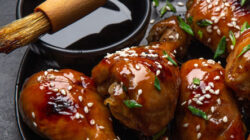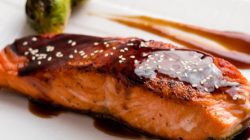Cuisine Deep Dive: Turkish
When a city like New York, home to thousands of Italian restaurants, averages more searches related to Turkish cuisine than it does Italian food, it’s time to sit up and take notice.1 Turkey is a veritable patchwork quilt of Mediterranean flavors and ingredients because of its location between Bulgaria, Greece, Egypt, and Iran. In the United States, we’re seeing growth in Turkish cuisine as its influence is spreading and exposure increasing from street foods and creative restaurants.
Perhaps we were always ready for Turkish cuisine. The Middle East paved the way with the gyro and Turkey’s yummy street food version is called the doner. Experts caution that Americans shouldn’t solely base their opinion of Turkish cuisine on that handheld delight as there are many more exotic dishes to tempt taste buds. Turkish cuisine has many parts including:
- Mezes: small appetizer dishes of dips and salad
- Boreks: pastries filled with meats, cheese or vegetables
- Dolmas: stuffed vegetable leaves
- Kebabs: meat on a skewer
- Zeytinyagli’s: vegetable dishes
At the heart of these dishes are heady spices like sumac, za’atar, cardamom, and cumin that play beautifully with ingredients like eggplant, pomegranate, molasses, labneh yogurt, or Aleppo peppers. One favorite dish, pideler (pide for short) is a flatbread topped with spiced lamb and goat cheese or oven roasted tomatoes. For more recipes and history, check out a couple of Turkish food blogs we are obsessed with: Ozlem’s Turkish Table and Café Fernando. Swoon.
Turkish Food Out and About
One of the original Turkish restaurants in the U.S. is Boston’s Oleana, established in 2001. While waiting for the rest of the country to catch up, Oleana has patiently served intoxicating dishes like Basturma Dumplings (filled with yellow tomato, fig, and arugula) or the famous tamarind beef and eggplant dish, Sultan’s Delight. Over time, Turkish pastries have popped up in bakeries across the country offering their version of the bagel (simit). Part bagel, part pretzel, simits are flatter and typically coated in sesame seeds while boasting fewer calories and fat than a bagel. The toppings are anything but simple—at famed Turkish bakery, Simit & Smith (NYC), customers can top their simit with spreads like black olive paste or salmon and cream cheese.
When a cuisine becomes a fast-casual breakthrough, it’s on its way to bona fide trend status. Turkish fast casual, PrimeCutts (LA), is sharing its brand of Turkish love to happy customers. Using a model like a popular Mexican fast casual, PrimeCutts’ customers build their own rice bowls, tacos, wraps with Turkish seasoned meats, shrimp, meatballs or falafel. Toppings include treats like spicy yogurt, avocado mousse, sambal, pickled cucumber and more. We are patiently waiting for one to come to St. Louis but might have to visit our California customers very soon.
Finally, we can’t close on Turkey without highlighting their coffee. The Ottomans invented Turkish coffee hundreds of years ago and its intense flavor is made possible from the coffee, necessary special grinder, and pot. Turkish coffee is blended, then roasted and finely ground even finer than espresso. The grind is important because Turkish coffee isn’t brewed or pressed; the grounds are first mixed with water in an ibrik (small copper pot) with sugar and then stirred. The coffee is stirred on the stove for one minute and left to boil—the whole process takes about 5 minutes. Once poured into a special coffee cup called a fincan, the grounds are left to settle at the bottom and the thick, syrupy coffee is then enjoyed. Sometimes the grounds are read like tarot cards for the consumer’s fortune. If you’re near Chicago, check out I-Café Sukur’s Place for fabulous Turkish coffee and a menu full of Turkish classics like mezes, pides, kebabs, dürüm (Turkish wraps) and more.
Obviously, this is just a small taste, but hopefully, your appetite is whetted enough to add a touch of Turkey to your applications. Check out our Toasted Sesame Dressing as an accompaniment for your project. Consumers are hungry for Turkish cuisine and we’d love to help.
Sources:
https://trends.google.com/trends/explore?geo=US-NY-501&q=%2Fm%2F07qr6,%2Fm%2F05xnqg,Italian%20food



